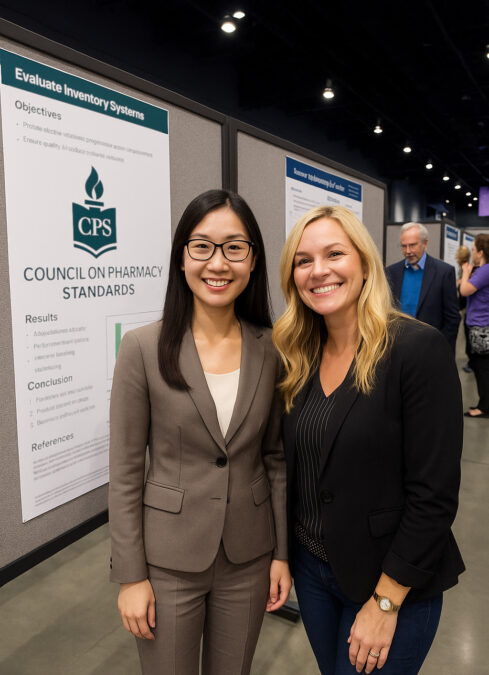No products in the cart.
CPS Releases White Paper on Best Practices in 340B Program Integrity

Abstract
The 340B Drug Pricing Program is an essential resource for covered entities but presents significant compliance risks. Increasing scrutiny from the Health Resources and Services Administration (HRSA) and pharmaceutical manufacturers necessitates a robust and proactive approach to program integrity. This white paper, developed from a national survey and an expert panel consensus, presents a Five-Pillar Framework for maintaining an audit-ready 340B program. The framework provides actionable best practices across the key domains of Governance, Patient Definition, Diversion and Duplicate Discount Prevention, Record Keeping, and Continuous Education. By adopting this framework, covered entities can better mitigate risk, ensure compliance, and safeguard the benefits of the 340B program for the vulnerable populations they serve.
I. Introduction: The High-Stakes Environment of 340B
Since its inception, the 340B Drug Pricing Program has enabled covered entities to purchase outpatient drugs at significantly reduced prices. The intent of the program is clear: to allow these entities—which include disproportionate share hospitals, critical access hospitals, and federal grantees—to “stretch scarce Federal resources to reach more eligible patients and provide more comprehensive services.”
However, the operational execution of this intent is fraught with complexity. The program’s statutory language is often ambiguous, and formal guidance from HRSA can be subject to interpretation and change. This environment has led to a landscape of intense scrutiny, with HRSA audits, manufacturer inquiries, and the risk of significant financial repayments for non-compliance becoming a constant reality for program managers.
The findings from our national survey of 340B professionals underscore this challenge: over 70% of respondents reported that keeping up with changing regulations and ensuring audit-readiness were their top professional concerns. This paper aims to provide a clear and actionable framework to address these concerns, moving organizations from a reactive stance to a proactive culture of compliance.
II. The Five Pillars of 340B Program Integrity
A successful 340B program is not built on a single piece of software or the efforts of one person; it is a comprehensive system built on a foundation of clear policies and continuous oversight. We have synthesized our research into a Five-Pillar Framework that represents the essential components of a high-integrity program.
Pillar 1: Unwavering Policy and Governance
A compliant 340B program begins with strong, centralized oversight. Responsibility cannot be siloed within the pharmacy department alone. True program integrity requires a multidisciplinary governance structure and a set of comprehensive, living policies and procedures that guide all operations. This top-down commitment is the foundation upon which all other compliance activities are built.
Best Practices:
Establish a Multidisciplinary 340B Oversight Committee: This committee should include representatives from pharmacy, finance, legal, compliance, and the executive C-suite. It should meet at least quarterly to review audit results, policy changes, and the overall financial impact of the program.
Maintain a Comprehensive Policy and Procedure (P&P) Manual: This should be a detailed, “living” document that is reviewed and updated at least annually. It must clearly define every aspect of the program, from patient eligibility criteria to inventory management and contract pharmacy oversight.
Conduct an Annual Risk Assessment: Proactively identify the areas of highest compliance risk within your specific organization and use this assessment to guide your internal auditing and monitoring priorities for the year.
Pillar 2: The Sanctity of the Patient Definition
One of the most common and costly findings in a HRSA audit relates to the incorrect application of the patient definition. The guidance requires that an individual must meet three cumulative criteria to be considered an eligible patient. The covered entity must have a clear and consistent process for documenting that this standard is met for every 340B-eligible prescription. Our survey found that 45% of entities still struggle with consistently applying the patient definition in complex scenarios, such as prescriptions written at discharge, during observation stays, or in provider-based clinics.
Best Practices:
Implement EMR Safeguards: Work with your IT department to implement hard stops or clear flags within the electronic medical record to help identify potentially ineligible patient locations or encounter types.
Conduct Regular Internal Audits: On a monthly or quarterly basis, conduct random sample audits of dispensed 340B prescriptions, tracing each one back to the medical record to verify that all three prongs of the patient definition were met.
Provide Continuous Education: Regularly educate providers and prescribers on the specific criteria that define a 340B-eligible patient for your institution, particularly during the onboarding process for new physicians.
Pillar 3: The Imperative of Diversion and Duplicate Discount Prevention
The two cardinal rules of the 340B program are clear: a covered entity must not divert 340B drugs to ineligible patients (e.g., inpatients), and it must not create a duplicate discount where a manufacturer pays both a 340B discount upfront and a Medicaid rebate on the back end for the same drug. Preventing these two infractions must be a primary focus of any compliance program.
Best Practices:
Maintain a Meticulous Medicaid Exclusion File (MEF): The entity’s listing on the HRSA Medicaid Exclusion File must be 100% accurate at all times, clearly indicating whether it will “carve-in” or “carve-out” Medicaid fee-for-service claims. This file must be reviewed quarterly.
Conduct Monthly Reconciliations: Implement a robust process to reconcile purchasing data, dispensing data, and billing data to identify and investigate any anomalies that could indicate diversion.
Establish Rigorous Contract Pharmacy Oversight: If using contract pharmacies, the covered entity must have a clear policy for oversight, including conducting independent annual audits and regularly reviewing their processes for identifying eligible patients.
Pillar 4: The Audit-Ready Record
In the world of 340B, the unofficial rule is that if an action is not documented with a clear and auditable record, it effectively did not happen. A covered entity must be able to produce accurate and complete records for any 340B prescription upon request by HRSA or a manufacturer. This requires a deep understanding of your data sources and split-billing software.
Best Practices:
Master Your Split-Billing Software: Ensure your 340B team has advanced training on your software’s functionality and can explain its accumulation and replenishment logic to an auditor.
Maintain Records for the Required Period: All 340B-related records must be maintained for a minimum of three years, and often longer as required by state law. Ensure your data archiving policy reflects this.
Conduct Mock Audits: At least annually, conduct a mock HRSA audit. Randomly select a sample of drugs and NDCs and attempt to pull every piece of required documentation (from the purchase order to the final patient claim) within a set timeframe. This is the ultimate test of your audit readiness.
Pillar 5: Continuous Education and Competency
340B compliance is a team sport. It relies on the knowledge and diligence of individuals across the organization, from pharmacy buyers and technicians to IT analysts, finance staff, and prescribers. A single point of failure can put the entire program at risk. Therefore, a commitment to continuous, role-specific education and competency validation is essential.
Best Practices:
Develop a Formal 340B Training Curriculum: Create a tiered training program with mandatory modules for all new hires who touch the 340B process, with more advanced training for the core 340B team.
Conduct Annual Competency Assessments: For key staff with direct 340B responsibility, implement an annual competency assessment to document their ongoing understanding of program rules and internal policies.
Invest in Professional Development and Certification: Encourage and support your 340B leadership to pursue advanced training and to validate their expertise by earning a credential like the Certified Compliance Pharmacist – 340B Focus (CCP-340B).
III. Conclusion: Integrity as a Strategic Asset
Maintaining 340B program integrity can feel like a daunting task. However, viewing compliance not as a bureaucratic burden but as a strategic function can reframe the effort. A high-integrity 340B program is a protected program. It is an optimized program. It is a sustainable program. By embracing the Five Pillars outlined in this framework—Governance, Patient Definition, Prevention of Diversion and Duplicate Discounts, Record Keeping, and Education—covered entities can move beyond a reactive, audit-driven mindset. They can build a proactive culture of compliance that not only safeguards the organization from risk but ensures that the full and intended benefits of the 340B program can flow to the vulnerable patients who need them most.
We hope this resource serves the pharmacy community in its efforts to maintain the highest standards of integrity. To validate your own expertise in this critical area, we encourage you to explore the Certified Compliance Pharmacist – 340B Focus (CCP-340B) certification.
To download a professionally formatted PDF version of this white paper, please click [here].

